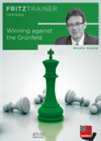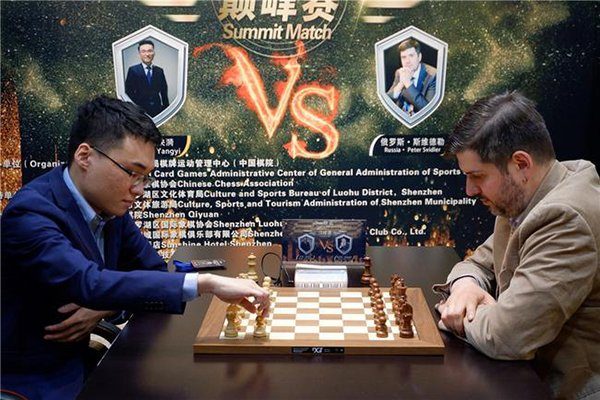One-sided affair
China is known for giving its strongest talents chances to play against international stars. Besides the already traditional Russia-China match, they pair their highest-rated players in individual matches. Last year, Yu Yangyi was defeated by Alexander Grischuk in a four-game match with a classical time control in Jiayuguan. This year, both the rival and the format were changed.
Before the tournament began, Yu Yangyi was ranked 15th in the FIDE rapid ratings list, while Peter Svidler occupied the 22nd spot. In blitz, they were number 14 and number 16, respectively. Looking only at these numbers, it would have been hard to predict any of the two dominating the match. However, as it is well known, these formats have more to do with form than anything else.
Earlier this year, Svidler played rapid and blitz at the strong Tal Memorial in Moscow. There, he actually did better at the blitz, where he finished on 6/13. On the other hand, Yu Yangyi arrived fresh from the Chinese Rapid and Blitz Championships, played last week (6-8 June) in Tianjin. He tied for first in the blitz section and finished clear second in the rapid. His score in both events was 7/9, and he did not draw a single game in the whole tournament.

Svidler dominated in Shenzhen | Photo: sports.sina.cn
The match in Shenzhen lasted three days. On Tuesday and Wednesday (12-13 June), four rapid games per day took place, with a 10+10 time control. On Thursday, ten 3+2 blitz games were played. As mentioned above, the rapid games granted twice as many points in comparison to the blitz games.
To review what happened in Shenzhen, we will present some of the games that became turning points in the match.
Rapid, game 1: The local takes early lead
Yu Yangyi started with the white pieces, and immediately it was clear that Svidler would not hide away from using his beloved Gruenfeld Defense. His first attempt, however, failed against the Chinese's domination of the light squares. It is worth replaying the whole game and see how Black is unable to take advantage of the bishop pair, given White's strong grip in the centre.
Rapid, game 3: Gruenfeld's revenge
This time, it was White who got the bishop pair and the space advantage, as it tends to happen in the Gruenfeld. However, Svidler had a better pawn structure and managed to attack White's weaknesses effectively. Eventually, the Russian's queenside pawns were too much for his opponent to handle.
In this DVD Sam Collins provides a complete and detailed repertoire for Black. Numerous novelties and improvements are suggested, with the conclusion that White has no clear route to an opening advantage.
Rapid, game 5: Yu Yangyi switches to 1.e4
After being defeated in a Petroff, Yu Yangyi decided not to go against Svidler's Gruenfeld again and played 1.e4. Peter went for a Closed Ruy Lopez — something he would use repeatedly in the match — and won a pawn in the middlegame. The players reached this position on move 39:
White has just played 39.Qg3, which was answered by 39...Rxb6, and White resigned. The Chinese probably was counting on 40.Rxb6 Qxb6 41.Qxg5 and it would be hard for Black to win the endgame. However, after 40.Rxb6, Black would instead play 40...Qd1+ Kh2 41.Bf4, winning the queen.
Rapid, game 7: Svidler wins with Black again
After losing the first game, Svidler won the next three he played with Black. In fact, his victory in round seven was his fifth in a row. Yu Yangyi miscalculated a forcing line:
White took the pawn with 23.Nxc4, as it discovers an attack of the bishop on h2 against Black's queen. Svidler answered with check, 23...Bxd4+, and White blockaded with 24.Ne3 (24.Kh1 was better). After 24...Ng3 25.Qd3 Ba7 26.Bxg3 Qxg3, Black is in better shape positionally.
Yu Yangyi could have maintained the tension by not going into this line, as it's usually hard to convert a better position in a rapid game.

Yu Yangyi finished the blitz with three wins in a row | Photo: sports.sina.cn
Blitz, game 6: Revenge against the Gruenfeld
The five first 3+2 games left Svidler on 'plus-one' (in the blitz), but Yu Yangyi's comeback started on the sixth game, when he finished off his opponent nicely:
White's central pawns were too fast against Black's queenside passers. 23.e6! Axe6 24.Bxb8 Rxb8 25.Rxe6! and Svidler resigned, as Qd7 is coming next move.
Blitz, game 8: A trapped queen
The first of three consecutive wins for the Chinese arrived rather quickly. In another Gruenfeld, Svidler played in his usual dynamic style, but was not careful enough to protect his queen against a backward bishop move:
 The Grünfeld is a highly dynamic opening in which Black's position often seems to hang together by a single thread; and yet, this apparently precarious equilibrium appears to be enough to make it entirely viable — up to the highest level.
The Grünfeld is a highly dynamic opening in which Black's position often seems to hang together by a single thread; and yet, this apparently precarious equilibrium appears to be enough to make it entirely viable — up to the highest level.
White played 19.Bc1, Svidler resigned and the match was over. The final score favoured the Russian 15½ : 10½.
It was a great result for Svidler, who can look at a second semester of the year with optimism, while Yu Yangyi can at least find solace in the fact that he performed excellently in the Chinese Championships.
Results
All games
Links

























